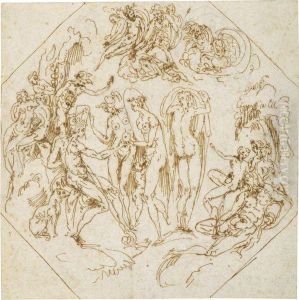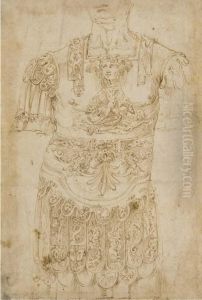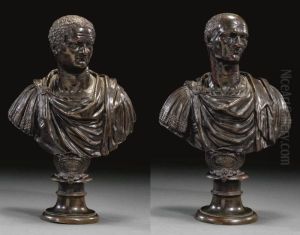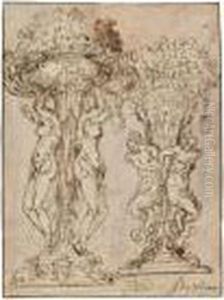Fra Guglielmo Della Porta Paintings
Fra Guglielmo Della Porta was an Italian sculptor and architect who played a significant role in the transition from the Renaissance to the Mannerist style in Italian sculpture. Born around 1515 in the Republic of Genoa (present-day Italy), Della Porta hailed from a family of artists and architects, which provided him with a fertile ground for nurturing his creative talents from a young age. His early works are reflective of the Renaissance ideals, characterized by a harmonious balance and proportion, but as his style evolved, it began to exhibit the complexity and dynamism associated with Mannerism.
Della Porta's career took a decisive turn when he moved to Rome, the epicenter of the Renaissance art world, where he became involved in several important projects that showcased his evolving artistic style. Among his most notable works is the funerary monument of Paul III in St. Peter's Basilica, which he completed after the death of Michelangelo who had initially started the project. This work, in particular, highlights Della Porta's ability to blend sculpture and architecture seamlessly, creating a monument that is both dramatic and introspective.
Throughout his career, Fra Guglielmo Della Porta collaborated with other prominent artists and architects of the time, contributing to various significant buildings and sculptures across Italy. His works were celebrated for their expressive figures and elaborate detail, which became a hallmark of his mature style. Despite being a pivotal figure in Italian sculpture, Della Porta's contributions have often been overshadowed by his more famous contemporaries.
Della Porta's influence extended beyond his lifetime, impacting the development of Baroque sculpture. His approach to composition, his exploration of movement and emotion in sculpture, and his innovative use of space influenced a generation of artists who came after him. He died in 1577, leaving behind a legacy that encapsulates a pivotal moment in the history of Italian art, marking the transition from the serene beauty of the Renaissance to the more expressive and dynamic Mannerist style.




